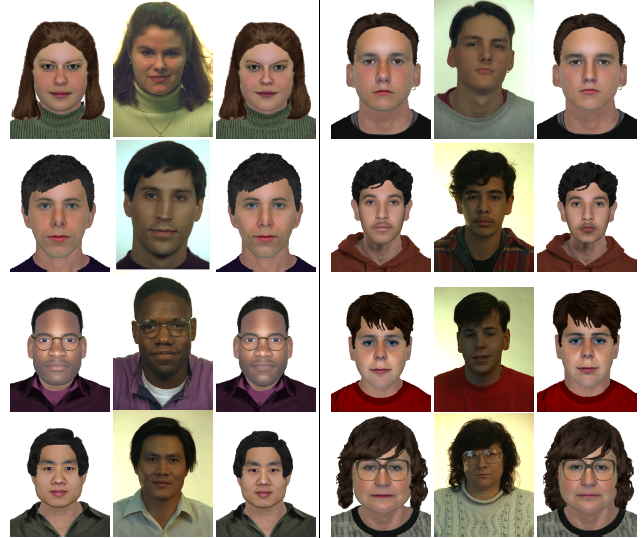The UoM-SGFS Database
The UoM-SGFS database has been developed and published to give all researchers working in the area of heterogeneous face recognition the possibility to adequately assess the performance of their algorithms. It may be used as it is without further permission. All documents and papers that use or edit the UoM-SGFS Database must cite the following paper:
C.Galea, R.A. Farrugia, "A Large-Scale Software Generated Face Composite Sketch Database," in IEEE Conf. of the Biometrics Special Interest Group, Darmstadt, Germany, Sep. 2016.
The main contribution of this dataset are:
- The UoM-SGFS database is the largest software-generated sketch database that is made publicly available.
- All the composite sketches in the UoM-SGFS database are represented in full color and thus enable the use of color information for face photo-sketch recognition.
This database contains software generated sketches of 300 subjects in the Color-FERET database, created using the EFIT-V software which is commonly used by law enforcement agencies. The EFIT-V operator was trained by a qualified forensic scientist from the Malta Police Force so as to ensure that practices adopted in real-life were also used in the creation of the UoM-SGFS database.
This database contains two viewed sketches for each of the 300 subjects considered, and is thus partitioned into two sets, where each contains the sketch of one subject. Set A contains those sketches created using EFIT-V where the number of steps performed in the program was minimised so as to lower the risk of producing composites that are overly similar to the original photo. In fact, the average time taken to create sketches varied between approximately 30 to 45 minutes. The sketches in Set A were then edited using the Corel PaintShop Pro X7 Image editing software to fine-tune details which cannot be easily modified with EFIT-V, yielding Set B. Consequently, sketches in Set B are generally closer in appearance to the original face-photos. On average, editing spanned approximately 15 to 30 minutes only, to retain inaccuracies as found in real-life forensic sketches. The Corel software was also used for sketches in Set A, but only to modify the hair component. The EFIT-V software also allows the depiction of shoulders in the sketch, which can indicate the type of clothes that the perpetrator was wearing and the physique (e.g. fat, muscular, etc.). While the type of clothing is important, more emphasis was given to correctly representing the physique of the subject since it provides more salient information. In addition, any accessories such as jewellery and hats are generally slightly different to those shown in the original photograph and sometimes omitted in the UoM-SGFS sketches to mimic memory loss effect of eyewitnesses. The figure below show eight subjects and their corresponding composite sketches generated using EFIT-V. The UoM-SGFS database can be downloaded from here.
To get access to the dataset please fill in the following form.

Figure: Photos of eight subjects from the Color FERET database and the corresponding sketches (left Set A, right Set B).








